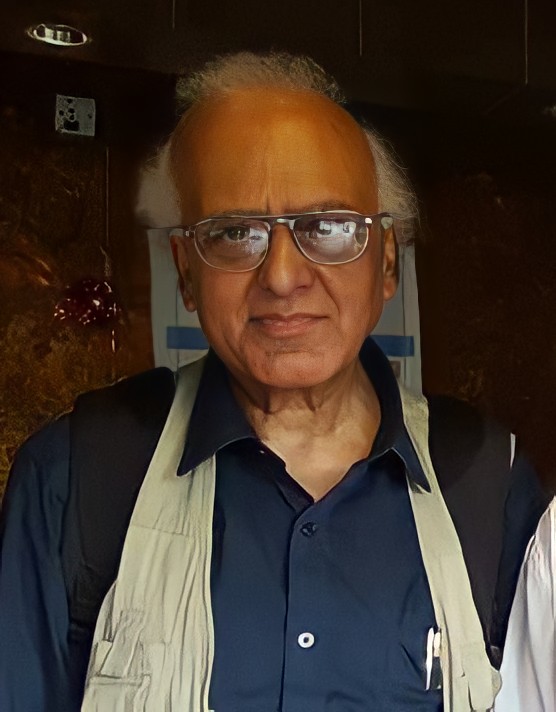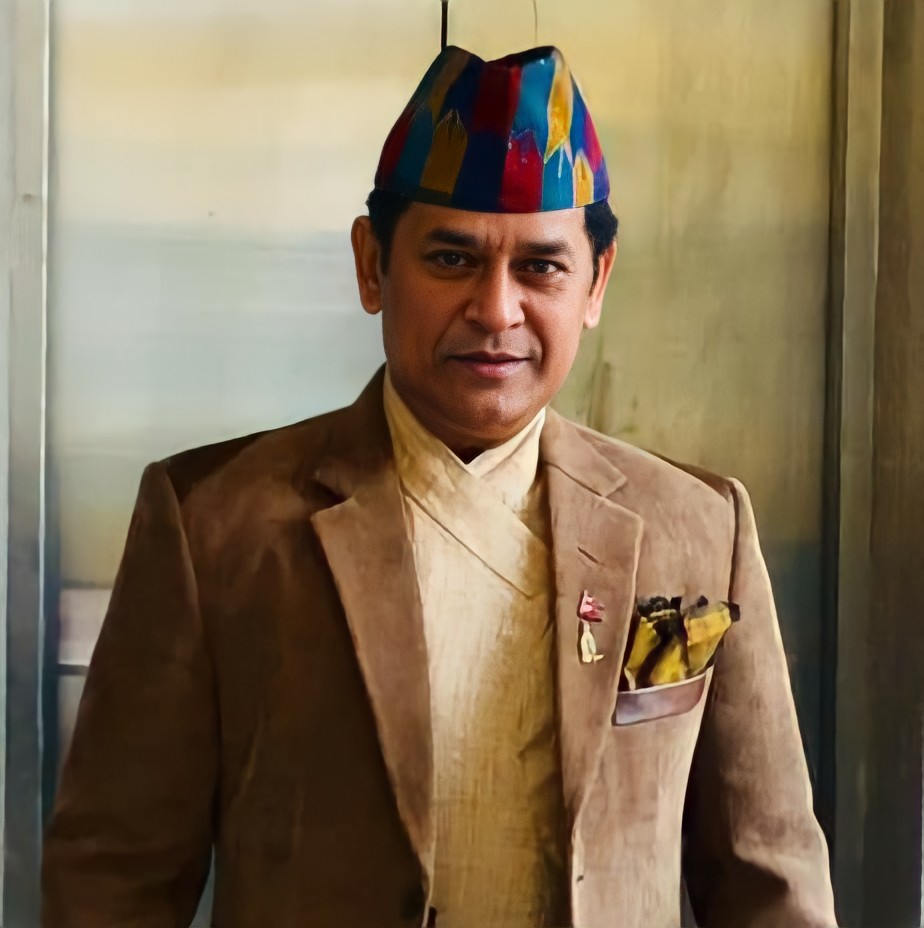Quick facts
Born on 6 Nov 1950 in Kathmandu
Went to Juddhodaya Public High School, Kathmandu
Graduate and postgraduate in Fine Arts from Banaras Hindu University, India
Established Nepal Academy of Fine Arts in 2010 (Was founding chancellor (2010-2014) of the governmental academy)
Husband of Sarita Manandhar
Father to Sagar Manandhar and Karuna Thapa
I was born on the day the revolution against the Rana regime formally started. My father used to say that at the time of my birth gunfire could be heard everywhere. Perhaps, for this reason, I can’t tolerate loud noise. And peace is vital for any artist. That was an early sign, I believe.
As a child, I was not a good student and never liked going to school. My father was a mechanic at the Royal Palace and wanted me to become a mechanical engineer. But schoolwork didn’t interest me and I used to skip classes.
My interest was in art. Growing up in a Newar family, I was taught to make mandalas, mandaps, and other arts during festivals. These were the things where my passion lay. I used to go to the Bishnumati riverbank and Balaju Park to paint.
I found joy in painting. One day a person saw me painting at Bishnumati and appreciated my work. This was something moving and motivating for a young boy. That person turned out to be the legendary artist Chandra Man Singh Maskey. He has taught me a lot about painting.
Despite missing school a lot, I somehow passed my school leaving certificate (SLC) exams and asked my father to send me to India for further studies. I lied to my family that I was going to study engineering. I went to India in 1972 and was admitted to Banaras Hindu University to study arts.
Accompanying me to India was my elder sister, who was the only person who understood and supported my passion for painting. When my father learned that I was studying arts in India, he got livid and stopped sending me money. For days, I had to sleep in railway stations without anything to eat. Everyone has their own struggle, and success comes to those who make sacrifices to reach their goal.
While I was in India, former prime minister and Nepali Congress leader BP Koirala used to visit me and encourage me to go to France for further studies. He was a very learned man and knew a lot about fine art.
I completed my master’s degree in 1980 and returned home. It was Koirala’s encouraging words that later made me go to France to study painting. Before leaving for France, I stayed in Nepal for three years, researching what our country lacks in the field of art. I visited many government officials and requested them to establish an art academy in Nepal, to no avail.

In France, I won many honorary awards. I used to teach French people about their history. The same problem bedevils us. Foreigners have to tell us about our history and potential. At least, the French people tried to learn about their history. But here in Nepal, most of us don’t care.
During both the popular uprisings (1990 and 2006), I was at the frontline protesting the autocratic rule. As an artist I thought my job was to protest through my arts. So I made ‘rebel arts’ responding to the social and political zeitgeist. I produced many paintings during those epoch-defining times, which I consider my finest works.
During my time in India, France, and other countries, I learned the importance of a government-funded academy of arts. In 2006, I finally succeeded in convincing the ministers at the time into establishing the Nepal Academy of Fine Arts, and I became its founding chancellor.
I have never lived with a plan, both as an individual and as an artist. I never plan what I paint. I just go with the flow. The flow of life, imagination, and feelings give shape and color to my paintings.
My artworks express my joy, sorrow, and attitude to social issues. The impressions of nature, tranquility, truth, love, beauty, and peace are reflected in my creations. My works are abstract and it would be presumptuous to see a particular meaning in them. I think abstract forms emanate from the act of getting deep into the form.
I use materials as per my whim. I do variations in colors, paper types, and fabrics. During the process of pouring my feelings on the canvas, I feel this great power and energy. I forget about the brushes and knives and start using my hands to paint.
An extraordinary incident encouraged me to take my abstract creations to the next level. In Paris, I had a dream encounter with a saint clad in an orange garb. He entered my room where I was painting, and I automatically learned to use knives with more creativity. I immediately began improving and innovating on my style of abstract expressions.
This happened to me again when I was in Nepal. The same saint and I had a conversation about paintings. I think my work improved after that. These dream encounters might sound like nonsense too many but I consider them blessings.
These days, whenever I am in front of canvas, I feel the saint is with me. I feel his soul has entered me and I engage in a creative dialogue with this invisible saint, who guides me to convert my feelings into abstract art forms. Whenever I sit to paint, I have two canvases with me as a single piece of art won’t be able to absorb all my energy.

About him
Karuna Thapa (Daughter)

Our family carries the legacy of my father. He used to explain his abstractions to us and we used to accompany him by coloring our canvases. Even though I didn’t take it professionally, my brother continued and now is a professor of fine arts. My father has passed his legacy not just to us, but to the aspiring artists of the entire country.
Abhi Subedi (Friend)

I have written over 20 articles on Kiran. He is an abstract painter, but his works have figurative echoes. Some of them have explicitly recognizable human figures. The use of all primary, secondary, and tertiary colors in his paintings show he has entered a new phase in his relationship with his medium.
Birendra Hamal (Student)

Despite being a professional theater artist, I am a painter too and all the credit for this goes to Kiran dai. I have done many dramas based on his paintings and stories. Kiran dai is a down-to-earth person and always encourages his juniors to learn. He has painted on over a dozen of my t-shirts and I have kept all of them safely. They are priceless
A shorter version of this profile was published in the print edition of The Annapurna Express on May 19.












